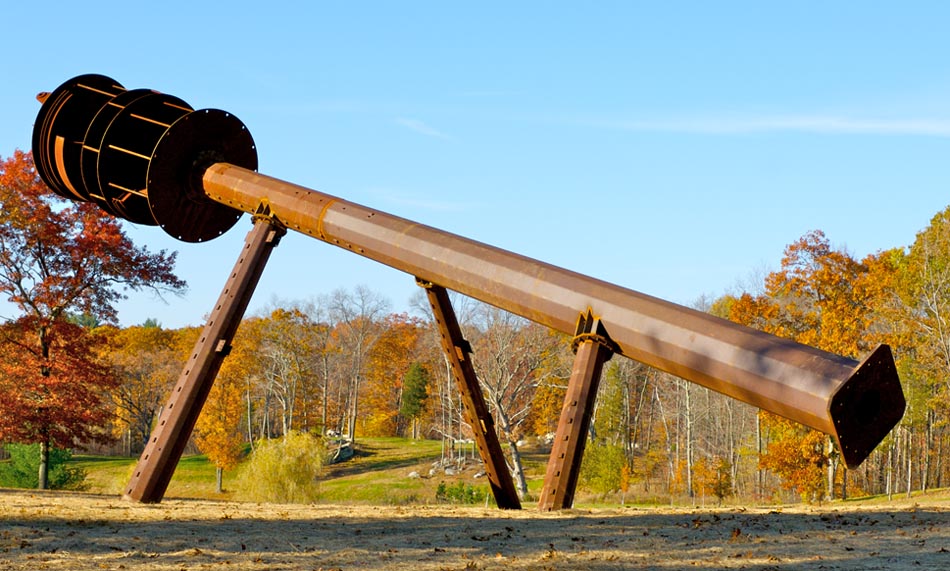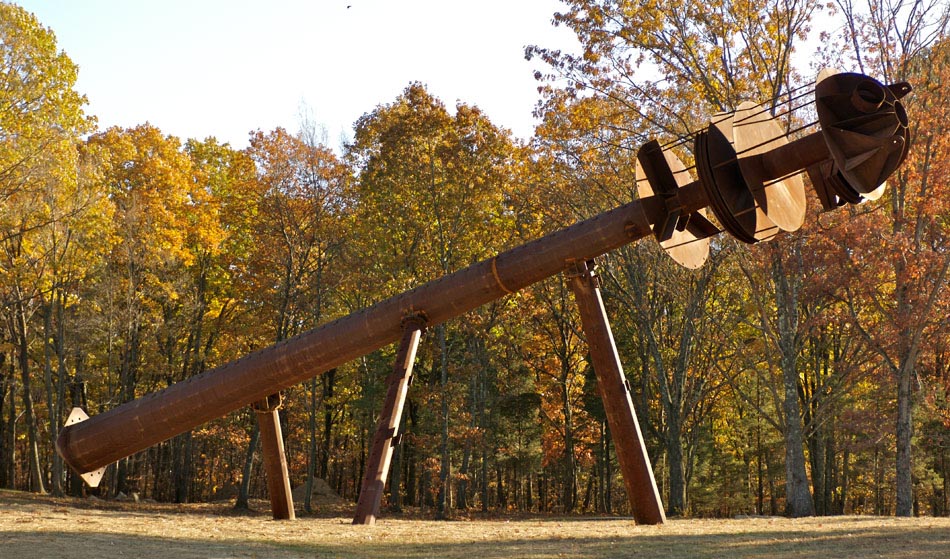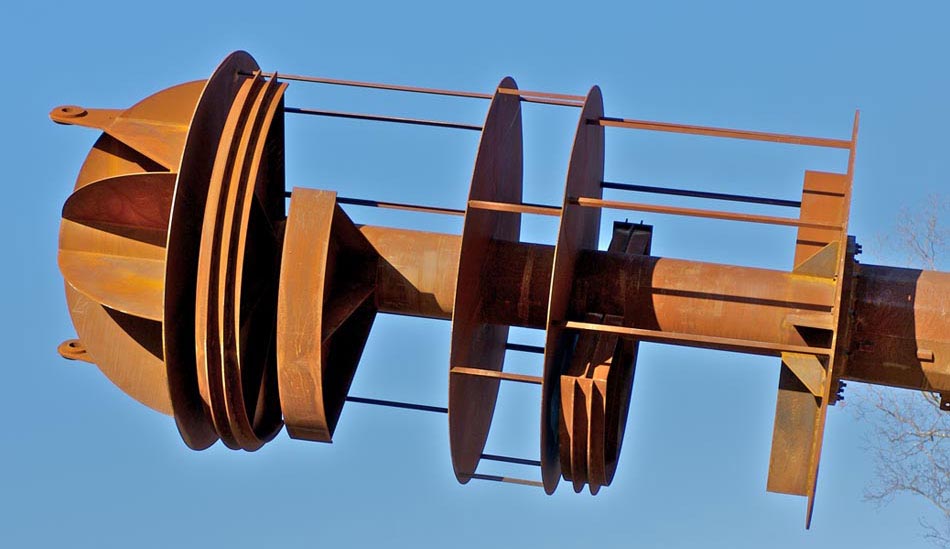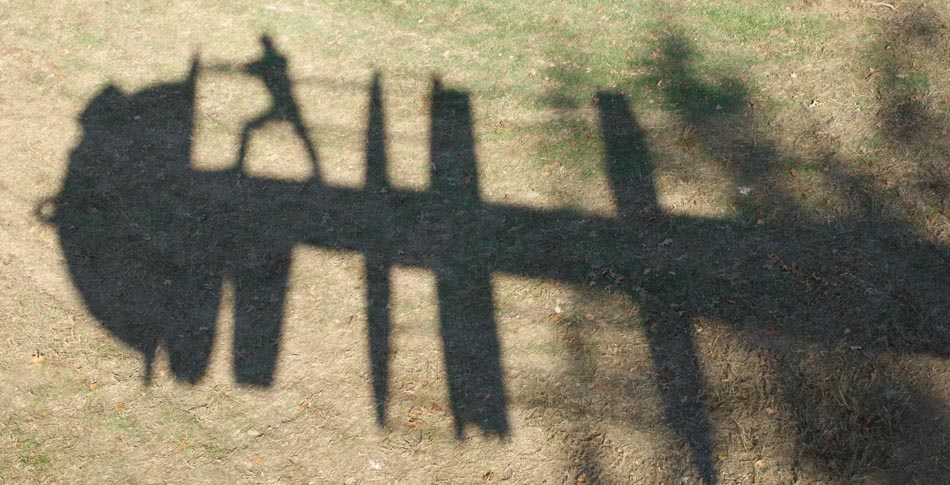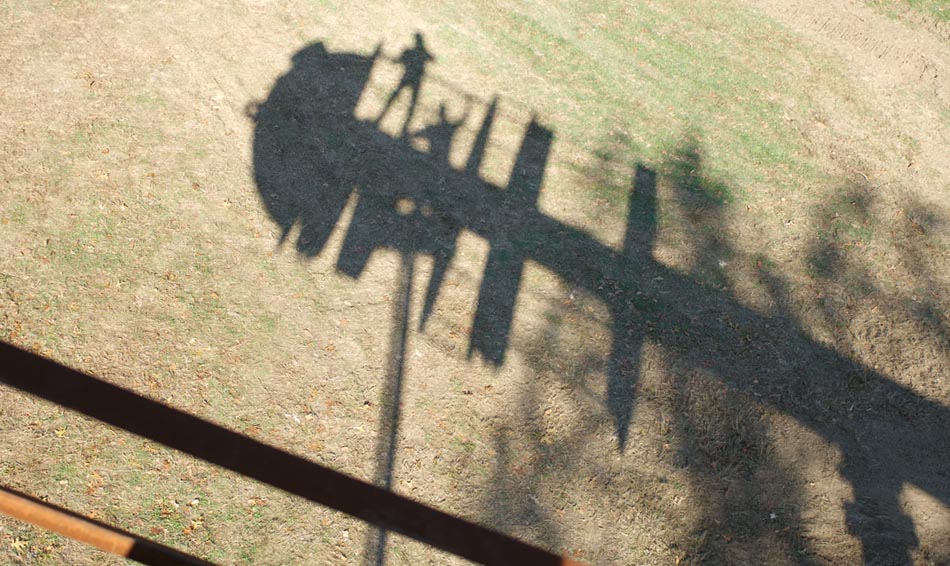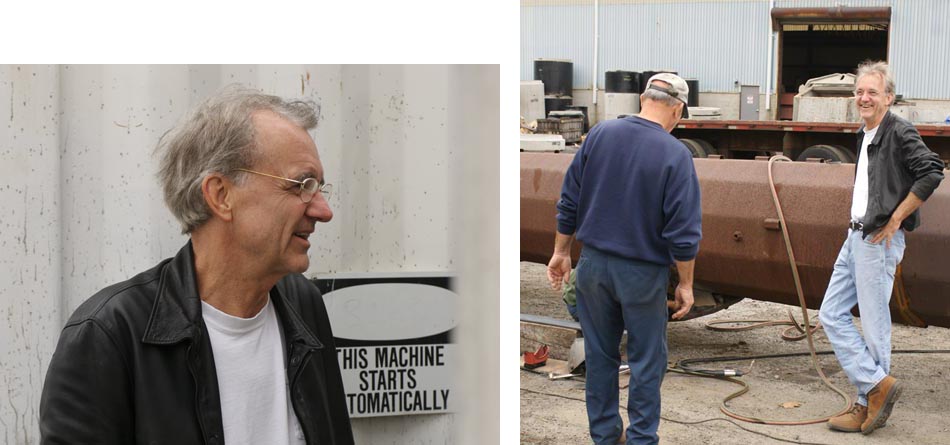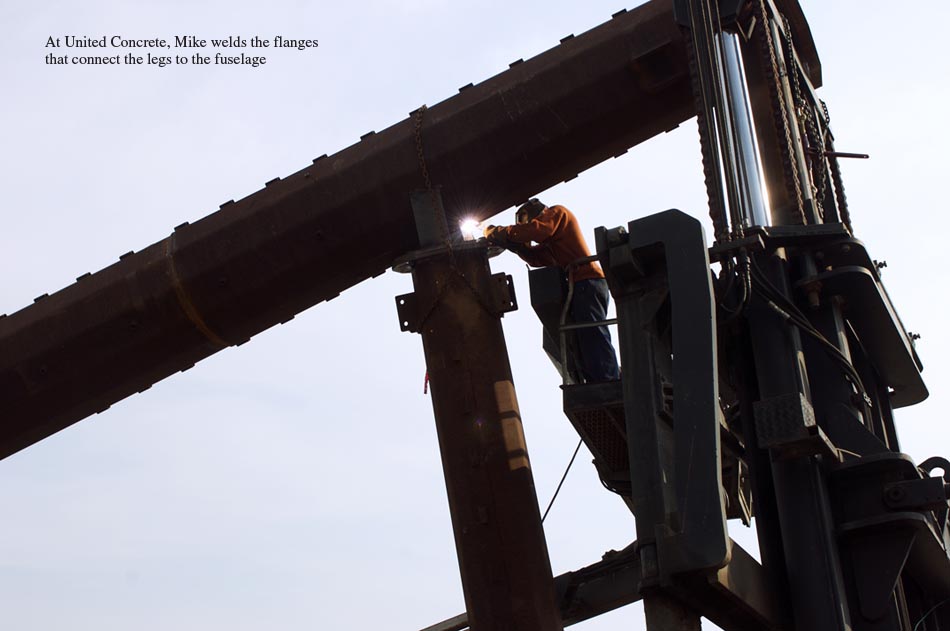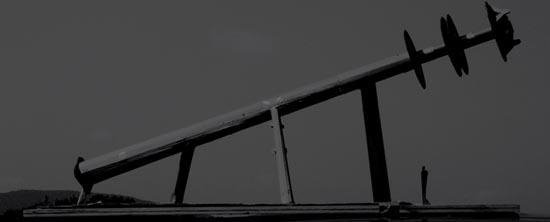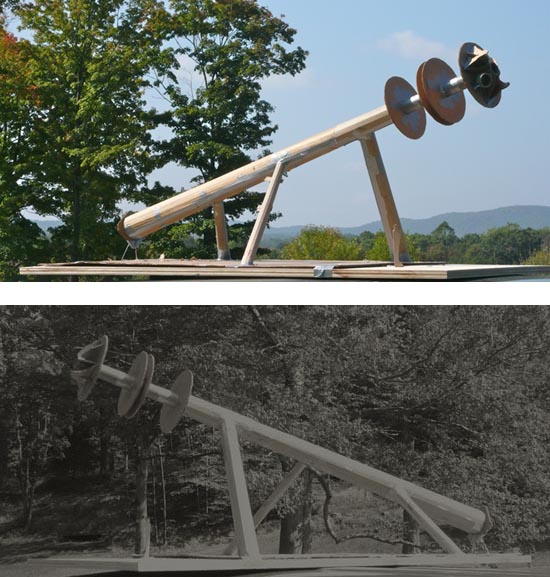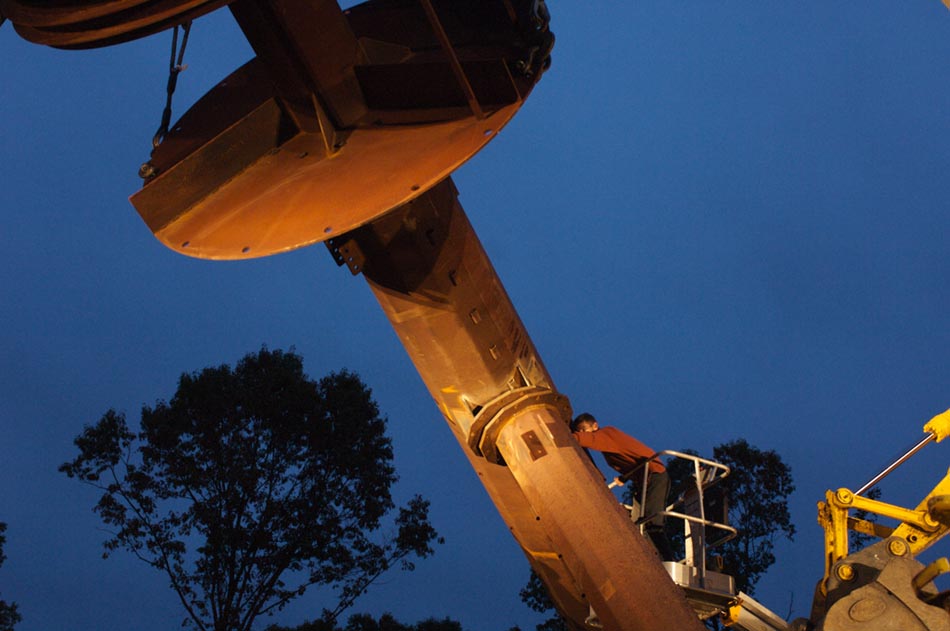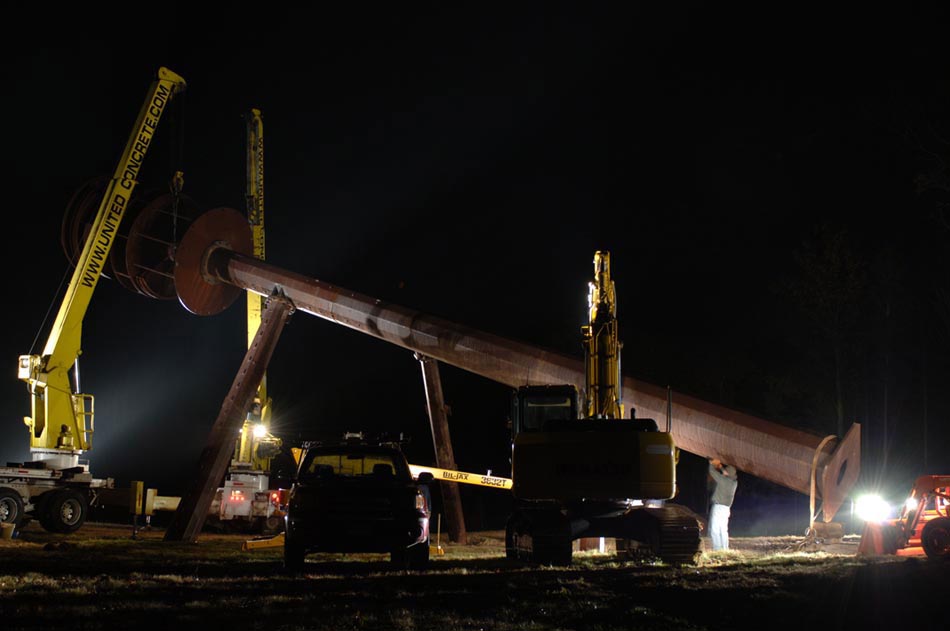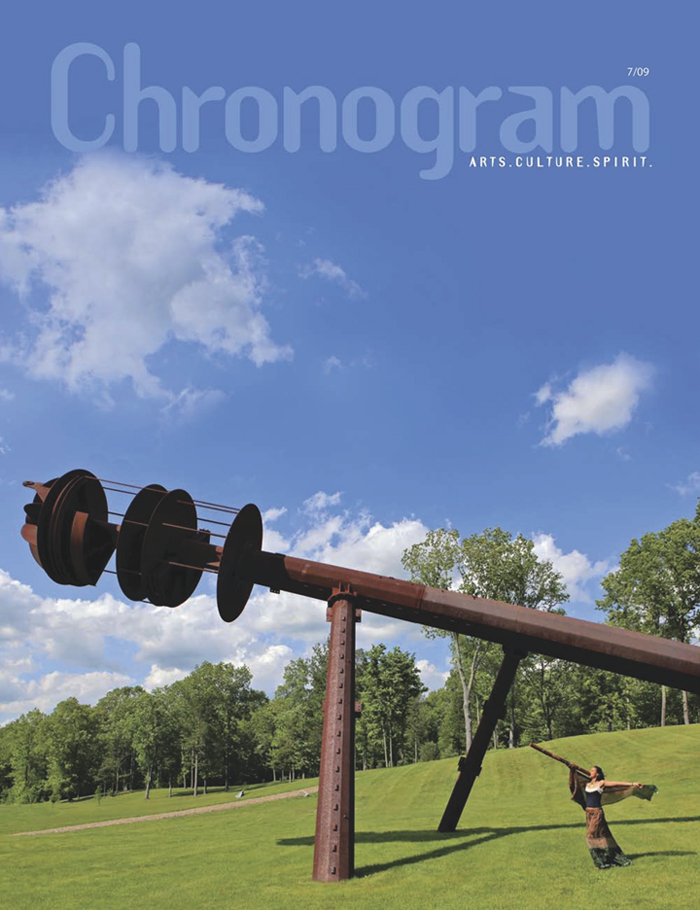|
All 5 books, Edward Tufte paperback $180
All 5 clothbound books, autographed by ET $280
Visual Display of Quantitative Information
Envisioning Information
Visual Explanations
Beautiful Evidence
Seeing With Fresh Eyes
catalog + shopping cart
|
Edward Tufte e-books Immediate download to any computer: Visual and Statistical Thinking $5
The Cognitive Style of Powerpoint $5
Seeing Around + Feynman Diagrams $5
Data Analysis for Politics and Policy $9
catalog + shopping cart
New ET Book
Seeing with Fresh Eyes:
catalog + shopping cart
Meaning, Space, Data, Truth |
Analyzing/Presenting Data/Information All 5 books + 4-hour ET online video course, keyed to the 5 books. |
|
Rocket Science, my landscape artwork, was recently installed in a rolling meadow surrounded by local, middle, and distant horizons.
Rocket Science is ~32 feet (10 meters) high and ~72 feet (22 meters) long, and is constructed from ~48,000 pounds (22,000 kilograms) of rusting scrap steel. The picture above shows, for scaling purposes, the artist (6 feet, 1.8 meters tall) standing inside the spaceship at upper right.
Below: Mike Nitowski, the welder from United Concrete who worked on Rocket Science, crawled 72 feet (22 meters) up the hollow tube in the fuselage and spacecraft emerging to see the fine view. The picture resembles a 1930s Soviet workers-paradise poster:
Rocket Science casts amazing shadows down on the rolling land, shadows that flow across the land and move up the sloping hillside as the Earth rotates and the sun sets. Here are shadow pictures taken from my spacecraft perch looking down to the ground.
Note the distortions in the shadow shapes. In creating the piece, I expected some good shadows
The shadows formed by the 3 legs should be interesting but shadows cast by nearby trees
Following an afternoon atop Rocket Science, I called for a rescue mission. Conducted by Commander Andy Conklin, the mission arrived smoothly in due course. As seen in the shadows below, Andy climbs aboard the spacecraft from the rescue vehicle:
After rescuing the camera guy, Andy conducts our long voyage (32 feet or 10 meters) back to Earth.
One reason that outer space activities produce intriguing images (other than their intrinsic content) is the complex
Theory of Rocket Science Rocket Science surprises, generates stories, presents self-contained paradoxes, is self-contrary. On Rocket Science paradoxes and internal contradictions:
RS is massive, assertive, made from grossly industrial materials;
RS is toylike
RS has a strong symmetry about the fuselage and spacecraft axis:
Thus,
At United Concrete in Wallingford, Connecticut, a pre-launch high-level engineering
Installation of Rocket Science
The United Concrete factory-built kit (some assembly required) for Rocket Science consisted of 8 items:
The main tasks were: (1) attaching the spacecraft to the fuselage, (2) attaching the 3 legs to the fuselage,
Here is our movie showing the 2-day installation:
This video is also available on YouTube and Vimeo Photographs by Andy Conklin, Andrei Severny, Edward Tufte. | ||||||||||||||||||||||||||||||
-- Edward Tufte
The top picture reminded me of the effect of "Mural with Blue Brushstoke" as presented on p. 17 of Visual Explanations. As my eyes scanned the picture left to right I had a completely wrong idea of the scale until I saw the person (ET?) on the right. The eye scanning motion here replaced the sidenote overlay in the book.
JCS
-- Jose Silva (email)
Kindly Contributor Jose Silva mentions an interesting connection. The relevant page from Visual Explanations is shown below.
Roy Lichtenstein's Mural with Blue Brushstroke is 68 feet high and Rocket Science 72 feet long; thus both are in the range of a human scale. Both Mural and Rocket Science use the creator of the artwork as the scaling device.
In contructing the essay about Rocket Science I briefly considered a Flash animation or a little clickable flap at the top right of the first image to cover/uncover me. But active, overly-didactic unveilings of scale would detract from the flow. There's still a good surprise as viewers realize what the scale is on their own.
 |
 |
-- Edward Tufte
This is pure flattery, but this is the best piece that ET have done, and I laid my eyes on. Though it looked like a cannon to me, even after reading the name rocket science. The long cylinder reminded me of a barrel, and the first picture did not give away the size of it at first. The size/scale effect is truly something, and I wish i could see it at location.
-- Peter H (email)
Installation movie
At the end of the initial contribution above, we've added a video showing the installation of Rocket Science.
-- Edward Tufte
Welders speak out on Rocket Science artwork
Mike, our welder on Rocket Science, posted his work on WeldingWeb, resulting in many comments by professional welders:
http://www.weldingweb.com/showthread.php?t=17319
-- Edward Tufte
As I watched the movie of the installation of RS, I kept in mind what ET wrote of the contradictions of the piece. The movie's images were sped up however, the audio was real-time, maybe taken from segments of the various clips or just from one. Just a funny note that I thought tied in well to the piece.
-- lucas (email)
Abandoned rocket science
A remarkable collection of abandoned spacecraft, ideal materials for another Rocket Science sculpture.
http://www.oobject.com/category/abandoned-space-technology/
-- Edward Tufte
Symmetric vs. asymmetric vehicles
Rocket Science is a symmetric vehicle, which is usually the right way to design launch vehicles. The shuttle paid an enormous price for the asymmetry resulting from its faux airplane. The new proposed NASA rockets are rigorously symmetric and thus correct a fundamental conceptual error in the shuttle design. See the good graphics describing the new spacecraft along with the story by John Schwartz, "The Fight Overs NASA's Future," The New York Times, December 30, 2008.
John Schwartz wrote several stories in the Times about my work on engineering by PowerPoint in the Columbia accident.
-- Edward Tufte
|
||||||||||||||||||||||||||||||||||||||||||||||||||||||||||||||||||||||||||||||||||||||||||



